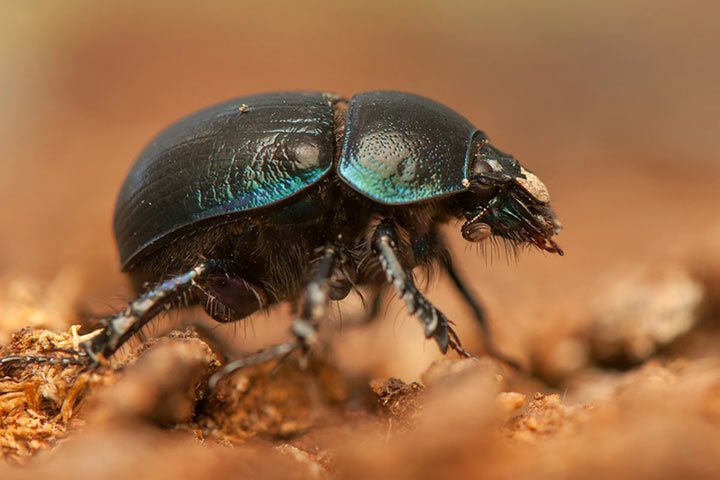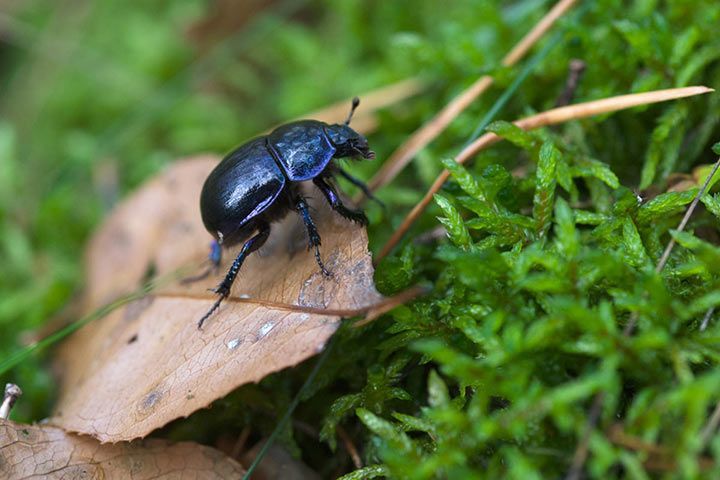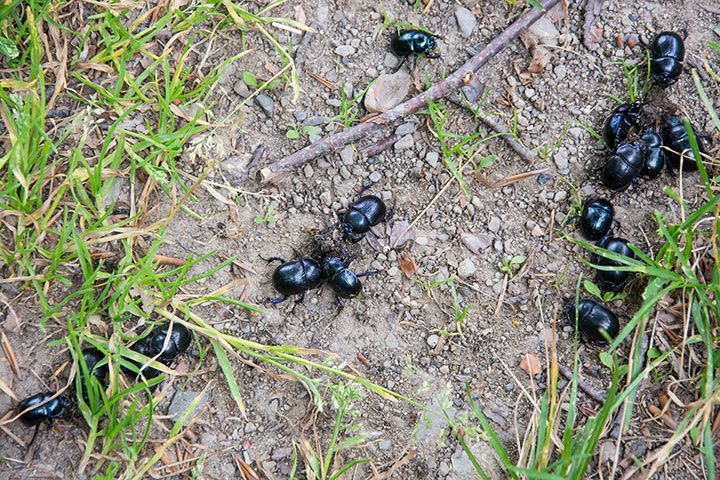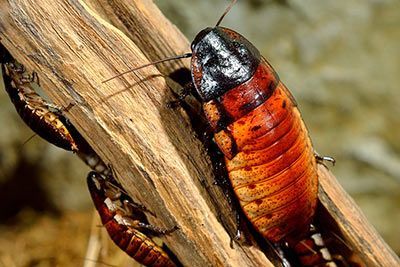Dor Beetle
Dor Beetle Facts
| Size | 0.6-1 in (16-25 mm) |
| Speed | Unknown |
| Weight | Unknown |
| Lifespan | 2-3 years |
| Food | Dung |
| Predators | Birds, snakes |
| Habitat | Europe, North Africa |
| Order | Beetles |
| Suborder | Polyphaga |
| Family | Geotrupidae |
| Scientific name | Geotrupes stercorarius |
| Characteristics | Dot-shaped indentations at the sides |
Main Characteristics
There are about 150 species of dung beetles, 59 of them are living in Europe. They prefer forests, fields and steppes, are diurnal and nocturnal and can fly. Yet, the little chubby chaps are moving about rather clumsily.

Origin
Where Does the Scientific Name Come From?
The scientific term for the common dor beetle is Geotrupes stercorarius. Geotrupes stands for „earth driller“ (Geo = earth; trupes = drill). Stercorarius indicates „the one that cleans out“.

Behavior
What Do Dor Beetles Eat?
They like to eat what we want to get rid of as quickly as possible: feces. Dung (feces from herbivores), to put it more exactly. In most cases it is not completely digested and, in addition to grass eaten by horses, cows, rabbits, etc., contains a liquid with the little organisms the beetles like so much. The common dor beetle particularly appreciates cow and horse dung. It mostly spends its evenings flying about in the proximity of those animals and waiting for some food to “fall down”. Some dor beetles also feed on fungi or humus.
Dor Beetles Exclusively Feed on Fresh Dung
Time is Dung. After some time, the “delicious” liquid inside the dung dries up. This is why dor beetles only eat fresh and moist dung.

Reproduction
Dor beetle males and females mate in spring and then dig burrows with tunnels and chambers into the ground. When everything is ready and the chambers are filled with dung balls (yummy!), the female beetle lays one egg in the chamber before it is filled with even more dung and sealed with clay afterwards. After one year, the little larvae are fully grown and pupate.
Dor Beetles Take Care for Their Brood
In contrast to mammals, insects are not particularly known for taking care of their offspring. Dor beetles are among the few exceptions. Male and female beetles even stay together to ensure that their kids have a good start into life.
Dor Beetles Team Up
Males and females form excellent teams: While the female beetle is mostly responsible for digging tunnels underground and preparing everything for the deposition of eggs, the male has to transport the earth out of the burrow.

Importance for the Ecosystem
Because the dor beetles store the dung underground, they provide the soil with nutrients and thus help to make it more fertile.
Fun Faccts
Dor Beetles Play Taxi Driver for Mites
In English-speaking regions the dor beetle is also called the “lousy watchman”. Small goldish yellow mites often cling to its underparts like stowaways. Scientists have several theories about this: Some think the mites are parasites feeding on the beetle’s body fluids. Others reckon that the mites use the dor beetle as a taxi to move from dry feces to new and fresh feces.
- Watch Now on animalfunfacts.net:
 The Strongest Animals in the World
The Strongest Animals in the World












